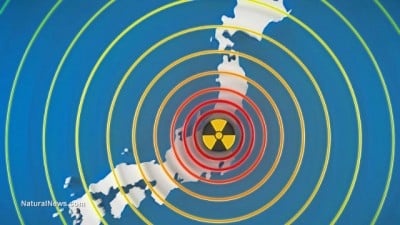Fukushima: Officials “Admitted Failure” — Giving Up on Attempts “to Prevent Highly Contaminated Water from Pouring into Ocean”

Japan Times, Nov 22, 2014 (emphasis added): Tepco fails to halt toxic water inflow at Fukushima… [TEPCO] admitted failure Friday in its bid to halt the flow of toxic water into underground tunnels alongside the ocean… Some 11,000 tons of highly radioactive water have accumulated in the tunnels… connected to the reactor 2 and 3 turbine buildings… according to Tepco. There are fears that this toxic buildup… could pour into the Pacific, which is already being polluted by other radioactive leaks… Friday, Tepco proposed a new technique for the tunnels: injection of a cement filler… some [highly radioactive water] would be left behind, endangering plant workers, Tepco acknowledged… [Gov’t experts] argued that Tepco should stick to the original plan and draw out all of the water. Others said giving up on it may hamper the construction of the ice wall.
Mainichi Daily News, Nov. 22, 2014: TEPCO fails to stop toxic water inflow into tunnels – [TEPCO] said Friday its attempt to stop the flow of highly toxic water into underground tunnels by the sea had failed… There are fears that the toxic water… could leak into the ocean… Removing the water is a necessary step in TEPCO’s unprecedented attempt to create a huge underground ice wall… Initially, TEPCO sought to freeze water in a section of a tunnel… The utility also took some additional measures, but they also failed.
Asahi Shimbun, Nov 22, 2014: After failures, TEPCO to use special cement… [TEPCO] plans to fill in trenches on the coastline in yet another attempt to prevent highly contaminated water from pouring into the sea… The new method will allow radioactive materials to remain in the surrounding soil, but TEPCO decided to employ the technique because it puts high priority on preventing massive amounts of highly contaminated water from leaking into the ocean. This spring, TEPCO tried to stop the water influx at the trench for the No. 2 reactor by freezing the junction of the turbine building and the trench… The company then attempted to stop the water inflow with a cement mixture, but was unable to do so…
NHK, Nov 21, 2014: TEPCO gives up on freezing tainted water – [TEPCO] is drastically changing its plan to remove highly radioactive water from underground tunnels… inundated with water from the plant’s heavily contaminated reactor buildings… TEPCO officials found that water levels in the tunnels were still changing in sync with volumes in the reactor buildings. The officials admitted to the Nuclear Regulation Authority on Friday that the tunnels hadn’t been plugged. They said they’re giving up on the plan… [NRA]commissioners asked whether the new method can really halt the inflow. They also spoke of the risk of cracks forming in cement… [O]ne commissioner asked what all the trouble over the past months was for.
NHK transcript: Regulators said they’re worried [the cement] might not stop the water and that it could crack. >> Watch the broadcast here

